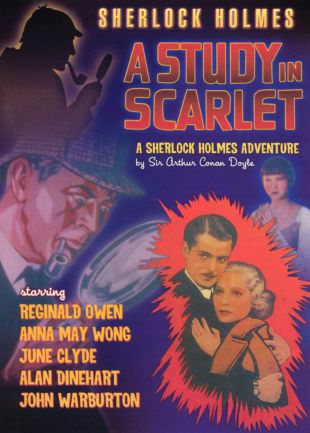
Originally Published 1996
Dame Frevisse #6
Preceded by The Boy’s Tale
Followed by The Prioress’ Tale
Caught under the tyrannical thumb of her new prioress, Dame Frevisse finds welcome relief in leaving St. Frideswide nunnery on pilgrimage. But the road brings with it unwelcome company: The wealthy Lionel Knyvet has been possessed by a foul demon. Seeking relief from the horrific terrors visited upon his body each fortnight, Lionel has dragged his entire household on an endless pilgrimage across the breadth and length of England. Frevisse wants nothing more than the peaceful bliss of travel, but must instead endure the incessant chattering of a mob.
Lionel’s possession, however, may only mask a darker sin. When the pilgrims make their way to the manor house at Minster Lovell, Frevisse begins to unwind the bitter poisons of jealousy and betrayal eating at the hearts of both Lionel and his brother Giles. Against her will, the innocent nun is drawn into the vilest depths of the human soul and there she unlocks the mysteries of a blackened heart. But even when the truth comes out, can justice be done? The pure of heart will find no peace when murder and death come knocking at the manor’s door…
It is pretty rare for me to start a series anywhere other than with the first book. When I do it is usually because the series has long been out-of-print or, more usually, I just didn’t realize that the book was part of a series.
When I picked up The Murderer’s Tale I was aware that it was not the first Dame Frevisse mystery and I did have easy access to those earlier titles in the series. The reason I chose to skip over them though will be an entirely predictable one to those who have followed this blog and taken a moment to consider the title of the book.
Yes, the reason is that The Murderer’s Tale is an inverted mystery (for those who are new to this blog, this is my favorite type of mystery). I am nothing if not predictable.
The novel begins by introducing us to the members of the Knyvet household who are travelling on pilgrimage. The group are led by the wealthy and jovial Lionel Knyvet who enjoys sharing riddles with his fellow travellers. We soon learn that this is just one of many pilgrimages that Lionel has made, hoping to find a cure for what he understands to be a demon (but readers will recognize as epilepsy).
Joining him on this journey is his cousin Giles who possesses a far more sour disposition and clearly resents his cousin’s wealth and being dragged across the country on what he sees as a futile endeavor. He is the heir to the estate and given that Lionel has vowed not to marry because of his condition, he expects to inherit.
Meanwhile Dame Frevisse, a nun at St. Frideswide nunnery agrees to undertake a pilgrimage with Sister Claire. The pair agree to take some papers to the lord at Minster Lovell that relate to a land dispute on behalf of the nunnery and on their journey they meet up with the Knyvet party, travelling with them until they reach the hall.
Okay, so it will come as little surprise that things will turn murderous or that Giles will turn out to be that killer. We share enough of his thoughts from the start of the book to recognize that he is a thoroughly unpleasant man who treats his servants viciously and has little respect for the women around him. He certainly is not treated as a sympathetic killer, particularly given the details of the murder he has planned, and while I did not find the passages from his perspective to be as disturbing to read as, for example, those by Jim Thompson in his inverted story, Pop. 1280, or Roger Bax in Blueprint for Murder, he certainly is not a character you would ever want to meet or interact with.
Though Giles does some interesting things at points in this story, I do not think he is a particularly deep or interesting character. Frazer makes little attempt to explore his deeper motivations or the events in his life that have shaped him into a killer. Instead he arrives already formed with a plan in mind (though we are not party to it) and there is little introspection after the murder. This strikes me as a little disappointing, particularly as there clearly was room in the narrative to feature some developmental moments or reflections.
Given that we already know the killer’s identity, I do not want to share details of what his plan is or how he sets about carrying it out – figuring that out and later how he will be caught is really the mystery here. I can say though that it is quite simple, which is appropriate for the setting, and is not particularly memorable either in its details or in the way it is executed.
While Giles tries to contrive a crime scene that tells a story, Dame Frevisse is unconvinced by some elements and starts asking questions. At this point the reader’s focus shifts to trying to see what aspects of the crime or the killer’s behavior she will spot and be able to use to prove what happened.
Here once again I have to say I was a little disappointed. Dame Frevisse certainly observes several issues with the crime scene and she is able to explain why those inconsistencies matter but because the crime itself is quite simple, the investigation feels similarly shallow. This is not helped by several clues being quite visual in nature and while I could guess how the information might be used, I could not know what exactly could be determined from it.
There are some bright spots however, particularly those in which Dame Frevisse interacts with other characters to discuss Lionel’s condition. It is this aspect of the story that struck me as the most interesting, both in its discussions of how epilepsy was understood in this period and also the way the laws of this period took mental health into account. An author’s note at the end of the recent ebook edition provides a little more information about this.
Similarly, though I found Giles to be a fairly underwhelming creation, I was pretty pleased with Frazer’s characterizations of her other supporting characters. While this book does not boast a big cast of supporting characters, I think they are fairly distinctive figures. For instance, I enjoyed Lionel’s coarse joking and Sister Claire’s worrying about her friend’s meddling. Similarly I like Frevisse herself who is a little quick to speak and I do think Frazer does a good job of conveying her personality and values.
While I did enjoy quite a few elements of this story and would certainly try others in this series, unfortunately I did not find it to be a particularly memorable inverted tale. While the villain of the piece certainly makes an impression as a figure to hate and want to see brought to justice, I longed for a little more depth and background to flesh him out or to allow him a moment where he does something unexpected.
As it is, The Murderer’s Tale is a competent historical story. Those who enjoy exploring a historical period may appreciate its discussions of people’s perceptions of health conditions at that time and the workings of an estate in the lord’s absence but I found the mystery element fairly shallow while the villain sadly underwhelms.
Further Reading
The author shared some notes about this book on her website here. This was the novel that split up a writing partnership and according to this account the process of writing from the murderer’s perspective played a large part in this.




Leave a comment